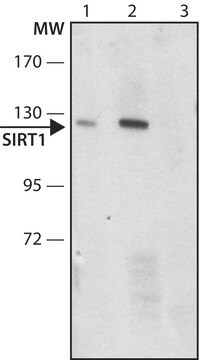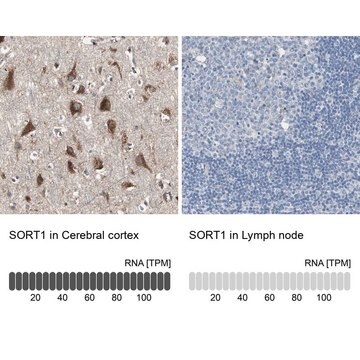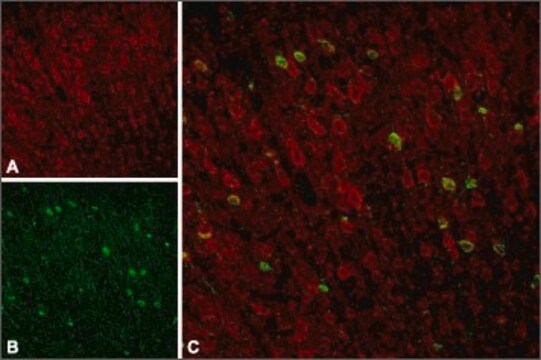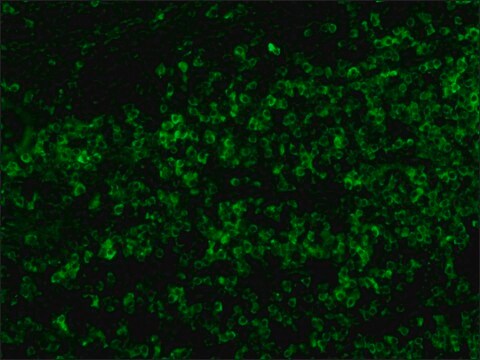MABN1792
Anti-Sortilin Antibody, clone F11
clone F11, from mouse
Synonym(s):
Sortilin, 100 kDa NT receptor, Glycoprotein 95, Gp95, Neurotensin receptor 3, NT3, NTR3
About This Item
Recommended Products
biological source
mouse
Quality Level
antibody form
purified immunoglobulin
antibody product type
primary antibodies
clone
F11, monoclonal
species reactivity
mouse, human
technique(s)
ELISA: suitable
immunocytochemistry: suitable
immunohistochemistry: suitable (paraffin)
western blot: suitable
isotype
IgG1κ
NCBI accession no.
UniProt accession no.
shipped in
wet ice
target post-translational modification
unmodified
Gene Information
human ... SORT1(6272)
General description
Immunogen
Application
Immunocytochemistry Analysis: Representative lots detected cellular localization of exogenously expressed sortilin in transfected HEK293 cells by fluorescent immunocytochemistry (Larsen, J.V., et al. (2014). Biochem J. 457(2):277-288; Gustafsen, C., et al. (2013). J Neurosci. 33(1):64-71; Larsen, J.V., et al. (2010). Mol. Cell. Biol. 30(17):4175-4187; Nielsen, M.S., et al. (2007). Mol. Cell. Biol. 27(19):6842-6851).
ELISA Analysis: A representative lot was employed as the detection antibody in sandwich ELISA. A positive correlation was found between PCSK9 and soluble sortilin in human serum samples from healthy individuals (Gustafsen, C., et al. (2014). Cell Metab. 19(2):310-318).
Western Blotting Analysis: A representative lot detected different distribution of Sortilin than SorLA among subcellular fractions obtained by gradient centrifugation (Nielsen, M.S., et al. (2007). Mol. Cell. Biol. 27(19):6842-6851).
Neuroscience
Developmental Neuroscience
Quality
Immunohistochemistry Analysis: A 1:50 dilution of this antibody detected Sortilin in human cerebral cortex tissue.
Target description
Physical form
Storage and Stability
Other Notes
Disclaimer
Not finding the right product?
Try our Product Selector Tool.
Storage Class
12 - Non Combustible Liquids
wgk_germany
WGK 1
flash_point_f
Not applicable
flash_point_c
Not applicable
Certificates of Analysis (COA)
Search for Certificates of Analysis (COA) by entering the products Lot/Batch Number. Lot and Batch Numbers can be found on a product’s label following the words ‘Lot’ or ‘Batch’.
Already Own This Product?
Find documentation for the products that you have recently purchased in the Document Library.
Our team of scientists has experience in all areas of research including Life Science, Material Science, Chemical Synthesis, Chromatography, Analytical and many others.
Contact Technical Service






